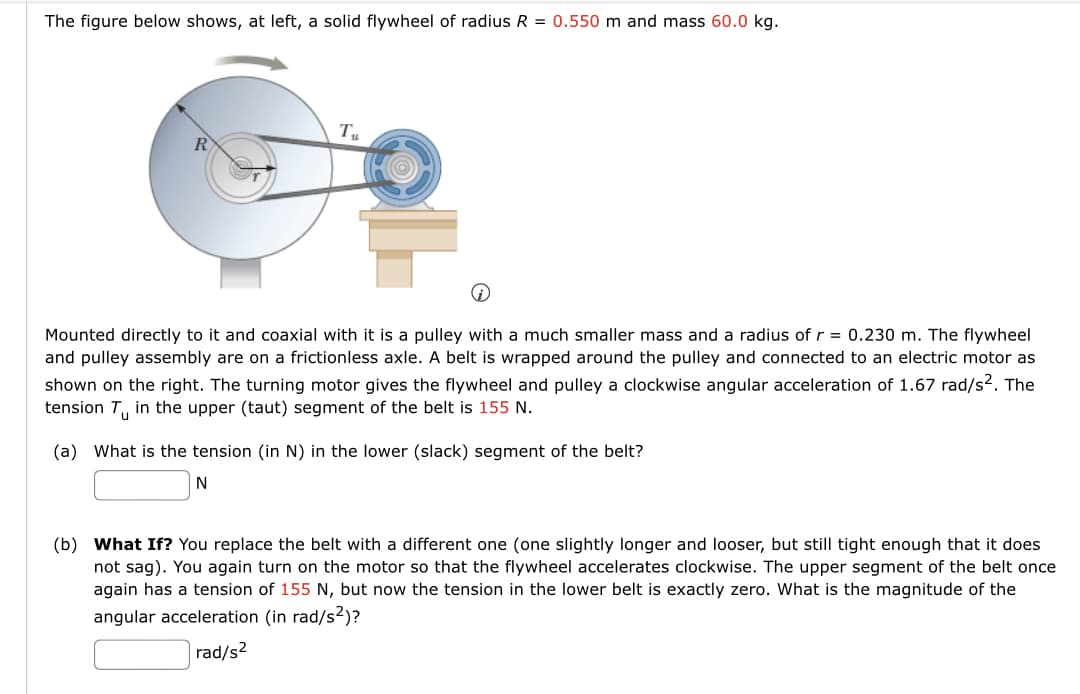The figure below shows, at left, a solid flywheel of radius R = 0.550 m and mass 60.0 kg. T Mounted directly to it and coaxial with it is a pulley with a much smaller mass and a radius of r = 0.230 m. The flywheel and pulley assembly are on a frictionless axle. A belt is wrapped around the pulley and connected to an electric motor as shown on the right. The turning motor gives the flywheel and pulley a clockwise angular acceleration of 1.67 rad/s2. The tension T in the upper (taut) segment of the belt is 155 N. (a) What is the tension (in N) in the lower (slack) segment of the belt? N (b) What If? You replace the belt with a different one (one slightly longer and looser, but still tight enough that it does not sag). You again turn on the motor so that the flywheel accelerates clockwise. The upper segment of the belt once again has a tension of 155 N, but now the tension in the lower belt is exactly zero. What is the magnitude of the angular acceleration (in rad/s²)? rad/s2
Rigid Body
A rigid body is an object which does not change its shape or undergo any significant deformation due to an external force or movement. Mathematically speaking, the distance between any two points inside the body doesn't change in any situation.
Rigid Body Dynamics
Rigid bodies are defined as inelastic shapes with negligible deformation, giving them an unchanging center of mass. It is also generally assumed that the mass of a rigid body is uniformly distributed. This property of rigid bodies comes in handy when we deal with concepts like momentum, angular momentum, force and torque. The study of these properties – viz., force, torque, momentum, and angular momentum – of a rigid body, is collectively known as rigid body dynamics (RBD).

Trending now
This is a popular solution!
Step by step
Solved in 2 steps with 1 images







